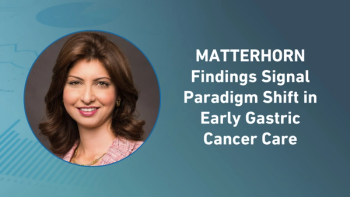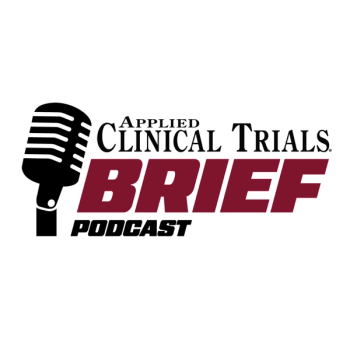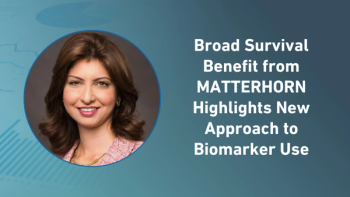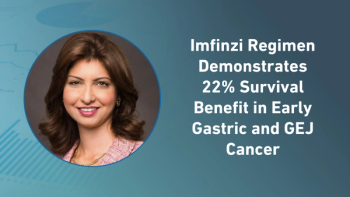
A Look at Sample and Laboratory Data Management Technologies
What technologies ease clinical trial laboratory sample and data management, and what are the benefits?
Today’s clinical trials, with their complex sampling requirements and increasing data output, demand innovative sample and data management tools. Fortunately, many technological solutions have been developed to ease the laboratory aspects of clinical trial conduct. Some aid in sample tracking and testing, while others assist with data management and analysis or cataloging and retrieval of stored samples. Electronic solutions for laboratory applications can help uphold sample and information integrity and deliver significant savings in time and resources. So, what technologies ease clinical trial laboratory sample and data management, and what are the benefits?
Virtual sample accessioning. Virtual accessioning is a means of recording subject, visit, and sample information without physically receiving the laboratory requisition and samples. One tool used for this purpose is the digital pen. Used to complete the requisition form, the pen captures data at the point of sample collection. This data, confirming patient, visit, and sample information-and associated with the sample’s identification number-is transmitted directly into the digital database.
The reason to automate the first step in comprehensive sample tracking is because even the best investigators make errors from time to time with today’s complex protocols. Prevention is the best remedy toward loss of samples, data, or sample integrity and this method of initiating the sample journey provides several quality assurance opportunities.
Virtual accessioning allows research teams to confirm what has been collected and immediately access each specimen’s data and GPS tracking information. Furthermore, query resolution occurs almost as soon as the laboratory requisition is completed. Beyond reduced clerical work, the result is more complete data, greater sample integrity, and improved sample security.
Customized sample tracking interfaces. Comprehensive, customizable digital sample management tools allow those with appropriate security to access study visit and sample information from any web browser. These tools allow research teams to track and monitor the status of individual samples anywhere in the world. This feature addresses the integrity of biological samples collected in the clinical trial.1
Customized sample tracking offers multiple short- and long-term benefits. A single, centralized database for study sample information allows for better sample reconciliation and enables critical samples to be identified quickly. Research teams can track samples in real time, on any day, at any hour. Sponsors can verify that samples are being maintained under optimal conditions from the time of collection through post-analysis retrieval, if necessary - and these conditions are documented. Tracking sample status in real time also allows increased visibility of and control over shipping logistics and costs. This greater transparency offers insight into measures that may reduce the time from collection to analysis.
Consolidated data management platforms. Working with multiple laboratories-whether regional, reference, or analytical/esoteric-amplifies the risks associated if poor data management processes exist. In addition, multiple contracts, data agreements, timelines, and procedures can increase the workload for clinical trial management staff.
Utilizing a consolidated data management platform allows the integration of complex, high-volume information collected from multiple laboratories, ensuring delivery of clean, merged data according to exact user specifications. This function is particularly pertinent as today’s trials produce large quantities of data from geographically disparate sources that may be using a variety of platforms. Infrastructure must be in place to help compile all the information so it can be analyzed as a whole.
A single, coordinating laboratory data management team, operating under a single data transfer agreement, can coordinate programming, coding, cleaning, and conditioning of data from disparate sources. Potential benefits are consistency, fast query resolution, and identification of integrity issues.
Local laboratory data capture and normalization. Shipping samples takes time and money, therefore the use of local laboratories to facilitate rapid subject screening and perform continual safety monitoring can be an effective solution, given the right framework. By working with local labs, sponsors also can avoid shipping costs, risks associated with moving the samples, and delays in analysis caused by time in transit.
However, the local laboratory data must be entered manually. Furthermore, variations in regional test reference ranges can make interpretation of the data challenging and must be considered through normalization.2 A centralized laboratory data collection service can receive local laboratory reports, harmonize them with results from other sources and incorporate the data into the centralized clinical laboratory database, in near real time.
Visualization tools for laboratory data analysis. Visualization tools are designed to enable effective data mining and interpretation through customized dashboards that allow users to present data in a variety of clear, visual formats. Analytics capabilities adept at demonstrating data visually in ways that are easy to understand and review, allow research teams to identify trends in study results sooner.
Secure data analytics web portals allow sponsors to review real-time trending of normalized results from the clinical sample database of internal, external, and normalized local laboratory results. Customizable user interfaces may offer tracking and alert features that can identify outliers, patterns, omissions, potential inconsistencies, non-compliance or normalization issues. Analytic views are generally downloadable for sharing and reporting.
Even the best laboratory sample and data management technologies are more effective when integrated. For today’s complex trials using multiple technologies may be made more optimal if a knowledgeable partner with global resources using these technologies is engaged. The key may be to identify a partner-a single point of contact-that can custom-design and launch a complete, seamless system of laboratory sample and data management technologies that will save research teams time and resources while ensuring that samples and data yield as much clinical insight as possible.
References
1. Lacorte, L. USFDA Training, Good Clinical Practice 101 [PDF document]. Retrieved from https://www.fda.gov/downloads/training/cdrhlearn/ucm176414.pdf
2. Huang Y. et al. Comparing and combining data across multiple sources via integration of paired-sample data to correct for measurement error. Stat Med. 2012 Dec; 10;31(28):3748-59. doi: 10.1002/sim.5446. Available at: https://www.ncbi.nlm.nih.gov/pubmed/22764070
Jeff Mayhew, chief development officer, Stephanie Weber, director of early development services, and Peter Colbourne, strategic business consultant
Newsletter
Stay current in clinical research with Applied Clinical Trials, providing expert insights, regulatory updates, and practical strategies for successful clinical trial design and execution.






.png)



.png)



.png)
.png)
